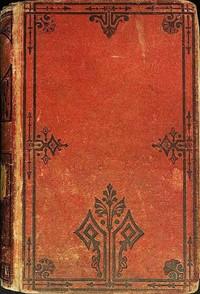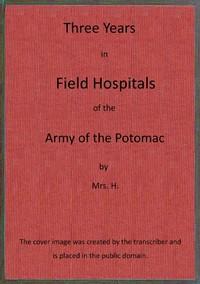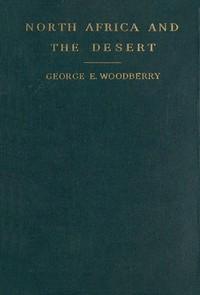|
|
Read this ebook for free! No credit card needed, absolutely nothing to pay.Words: 52328 in 21 pages
This is an ebook sharing website. You can read the uploaded ebooks for free here. No credit cards needed, nothing to pay. If you want to own a digital copy of the ebook, or want to read offline with your favorite ebook-reader, then you can choose to buy and download the ebook.

: Harness making by Hasluck Paul N Paul Nooncree Editor - Harnesses; Horses Equipment and supplies; Harness making and trade@FreeBooksThu 08 Jun, 2023 Index 157 FIG. PAGE 1.--Paring Knife 10 2.--Hand Knife 10 3.--Round Knife 11 4.--Head Knife 11 5.--Cutting Gauge 11 6.--Plough or Plough Gauge 12 7.--Side Elevation of Plough Gauge 12 8.--End Elevation of Plough Gauge 13 9.--Slitting Machine 13 10.--Spokeshave 13 11.--Edge Trimmer 14 12.--Washer Cutter 14 13.--Round Punch 15 14.--Oval Punch 15 15.--Buckle Tongue, or Crew, Punch 15 16.--Girth Chape Punch 15 17.--Brace End Punch 15 18.--Forepart of Brace End Punch 16 19.--Hand Punch 16 20.--Hand Punch Nipple 16 21 to 24.--Scalloping Irons 16 25, 26.--Rosette Punches 17 27.--Lead Piece 17 28.--Wooden Mallet 17 29, 30.--Useful Wooden Mallets 17 31.--Saddlers' Hammer 18 32.--Pricking-iron 18 33, 34.--Wheel Prickers 18 35.--Screw-race 19 36.--Single Crease 19 37.--Screw-crease 19 38.--Checker 20 39.--Beveller 20 40.--Compasses 20 41.--Race Compasses 20 42, 43.--Awl Blades 21 44.--Sewing Awl 22 45.--Bent Awl 22 46, 47.--Harness Needles 23 48, 49.--Seat Awls 23 50, 51.--Hand-irons or Palm-irons 24 52.--Clamp or Clams 24 53.--Clamp for Sewing Shaft-tugs 25 54.--Home-made Clamp Holding Work 25 55.--Jaws of Clamp 25 56.--Nail-claw 26 57.--Cutting Pliers 26 58.--Iron Collar Rod 27 59.--Steel Seat-iron 27 60.--Loop-stick 28 61.--Rubber 28 62.--Straining Fork 29 63.--Cutting up Hide 39 64.--Plain Waist Belt 53 65.--Fancy Waist Belt 54 66.--Waist Belt with Pockets 55 67.--Box Creased Loop 58 68.--Box Creased Loop 59 69, 70.--Box Creased Loops 60 71.--Horse in Cart Gear 62 72 to 75.--Scotch Brass Gear Buckles 63 76, 77.--Brass Face-pieces 64 78.--Brass Face-piece 65 79.--Bells and Brush 65 80, 81.--Brass Hame Plates 65 82.--Brass Oval 66 82 to 85.--Brass Octagons 66 86.--Brass Heart 66 87, 88.--Brass Stars 66 89, 90.--Brass Hame Knobs 67 91, 92.--Brass Swing 67 93.--Ear-piece 67 94.--Corner-piece 67 95.--Cart Collar without Side-piece 75 96.--Cart Collar Lining 79 97.--Cart Collar Side-piece 83 98.--Cart Saddle Tree 87 99.--Cart Saddle Panel 89 100.--Cart Saddle Hind Housing 93 101.--Cart Saddle Front Housing 95 102.--Set of Leader Gear 103 103, 104.--Hip-strap Chains 105 105.--Plough Back-band Hook 109 106 to 108.--Pelham Bits 111 109.--Hackney Bit 111 110.--Bridoon 111 111, 112.--Ladies' Horse Bits 112 113.--Pelham Snaffle with Indiarubber Mouth 112 114.--Hackney Bit with Indiarubber Mouth 112 115.--Gig Snaffle 113 116.--Wilson Snaffle 113 117.--Liverpool Bit 113 118.--Globe Check Curb Bit 113 119.--One-horn Bridoon Bit 113 120.--One-horned Bridoon with Indiarubber Mouth 114 121.--Gig Curb Bit 114 122.--Buxton Bit 114 123.--Swivelled Bridoon Bit 114 124, 125.--Breaking Bits 114 126.--Breaking Bit 115 127.--Snaffle with Indiarubber Mouth 115 128, 129.--Exercising Bits 115 130.--Show or Stallion Bit 115 131.--Double-mouthed Snaffle 116 132.--Ordinary Spur 116 133.--Officer's Regulation Spur 116 134.--Dress Spur 116 135.--Lady's Spur 117 136.--Trousers Spur 117 137.--Solid Stirrup 117 138.--Open Button Stirrup 117 139.--Waving Bar Stirrup 117 140.--Lady's Stirrup 117 141.--Stirrup Slipper 118 142.--Safety Stirrup 118 143.--Flat Side Wire Front Buckle 118 144.--Front Bevelled Buckle 118 145.--Bevelled Flat Top Buckle 118 146.--West End Bevelled Flat Top Buckle 118 147.--Spade Buckle 119 148.--Square Wire Buckle 119 149.--Chatham Buckle 119 150.--Flat Top Turned-up Buckle 119 151.--Fluted Buckle 119 152.--Swelled Front Bent-leg Buckle 119 153.--Flat Top Cab Buckle 119 154.--West End Whole Buckle 119 155.--Chased Buckle 120 156.--Melbourne Buckle 120 157.--Square Buckle 120 158, 159.--Covered Buckles 120 160, 161.--Part-covered Buckles 120 162.--Shaft Tug Buckle 121 163.--Burgess's Buckle 121 164.--Ball Terret 121 165.--Plain Terret 121 166 to 168.--Ball Terrets 122 169 to 172.--Hames 123 173, 174.--Bearing-rein Swivels 123 175, 176.--Roller Buckles 124 177.--Hame Clip 125 178, 179.--Breeching Dees 125 180, 181.--Winkers 129 182.--Van Saddle 131 183.--Van Saddle Flap 131 184.--Van Saddle Panel 131 185.--Chain and Leather Gig Front 140 186.--Chain and Leather Gig Front 141 187.--Chain and Leather Gig Front 143 188.--Crupper Dock 147 189.--Breeching, etc. 147 190.--Back-band 147 191.--Shaft Tugs 147 192.--Four-wheeled Cab Saddle 153 193.--Cab Saddle Tree 153 194.--Hansom Cab Saddle 154 195, 196.--Rein Stops 154 197.--Hansom Cab Harness 155 HARNESS MAKING. HARNESS-MAKERS' TOOLS. Harness making and repairing is a branch of leather work that can often be undertaken profitably by many persons, and the information given in the following pages has been adapted specially to the amateur's requirements. Doubtless the readers of a companion handbook on "Boot Making and Mending" have wished to pursue further the subject of leather working, and will take up the making and repairing of harness with pleasure. Aspirants to more highly skilled work will find "Practical Saddlery" of the greatest possible use to them, whilst readers less ambitious may look to "Leather Working" for instructions on making a number of articles, such as bags, portmanteaus, and cases, for which there is general employment and a consequently great demand. The two books just mentioned are issued uniform in style and price with the present work. In this handbook it is proposed to treat the subject of harness making so fully that anyone possessing tact and sense can make a set of harness from the instructions given, or, at any rate, keep harness in good repair. A start will be made by describing the tools that will be necessary. In the list given below, every essential tool is specified and its uses explained. The tools are very numerous, but the amateur may dispense with many of them; for though all of them may have to be employed by a tradesman in turning out finished work, an amateur may be content with a much smaller outfit. The tools are not bulky, however, and all that are necessary for making a double set of harness could be carried in a small handbag, excepting, of course, the mallet and collar-iron. The tools are here classified as cutting tools, punches and tools of percussion, tools for setting out, marking, and ornamenting, awls and needles for perforating, tools for gripping and holding work, tools used in stuffing collars and saddles, and miscellaneous. It may be remarked that saddlers' tools, as well as harness-makers', are included in this chapter. With regard to cutting tools, a paring knife and a hand knife are used for cutting thread, paring down, and splicing, and are otherwise generally useful. The round knife is used by saddlers instead of the hand knife for cutting, splicing, and thinning leather; they can be had in different sizes, suited to light and heavy work; their chief use is in thinning the edges of leather, and for giving a rounded appearance to lined straps, such as nosebands, traces, breeching straps, etc. The head knife is used for cutting the holes for buckle tongues and cutting any circular shapes or holes in leather. Fig. 5 is a cutting gauge made in iron or wood. A knife passes through the ruled stem, and is held firmly by a screw. It is adjusted by shifting the block, which is also held by a screw. The slitting machine is useful for thinning straps which are to be drawn down to half or one-third their thickness. A saddler's spokeshave may be used for the same purpose as the slitting machine. It is suitable for thinning light straps, and not only takes less time to adjust, but does the work more quickly than the slitter. The chief use of the spokeshave, however, is to trim and finish traces, backbands, etc. After a trace or backband or other lined strap is stitched, the uneven edges require to be rounded and smoothed; this is done by clamping the strap between the knees, holding the clamp a little straighter than when stitching, and using the spokeshave. Edge trimmers are for running along the edges of straps of all kinds to take off the sharp edge and sides before dyeing. It is made in sizes 1 to 8. Sharp and strong scissors are necessary for cutting linings, basil, and other kinds of thin leather. The washer cutter is used for cutting round pieces of leather by rule; the knife can be set at all sizes up to 6 in. Punches are indispensable, and half a dozen different sizes each of round and oval tools should be obtained. Round punches are made in sizes from No. 1, suitable only for very narrow straps, to No. 16, which make a hole 5/8 in. in diameter. Oval punches are numbered, according to size, from 17 to 32, and make a hole of similar dimensions to the round punches just mentioned. Punches of intermediate sizes, Nos. 3 to 13 or Nos. 19 to 29, will, however, answer for most repairing jobs. The ovals are preferable in most cases, as they make holes in the straps large enough for the purpose without impairing the strength so much as the round ones do. Buckle tongue punches, or crew punches are handy; these are made in three or four sizes, and they run from No. 33 to No. 43, and are used for making the holes that take the heel of the buckle tongue when the buckle is placed in its chape. This hole may also be made by punching two holes at a suitable distance from each other, and cutting between them, thus The strap has to be bent and a hole cut through the bent end, the piece between the holes for the tongue of the buckle being afterwards cut out. The punches shown by Figs. 16 to 18 may be used to cut saddle girth chapes, brace ends, etc. Free books android app tbrJar TBR JAR Read Free books online gutenberg More posts by @FreeBooks
: Up the ladder; by Leslie Madeline Hyde John N Illustrator - Christian life Juvenile fiction; Merchants Juvenile fiction; Diligence Juvenile fiction; Success Juvenile fiction; Apprentices Juvenile fiction; Alcoholics Juvenile fiction@FreeBooksThu 08 Jun, 2023

: The horrors of the Negro slavery existing in our West Indian islands by Anonymous - Slavery Law and legislation Great Britain; Enslaved persons West Indies Social conditions; Slave trade West Indies British@FreeBooksThu 08 Jun, 2023
|
Terms of Use Stock Market News! © gutenberg.org.in2025 All Rights reserved.






